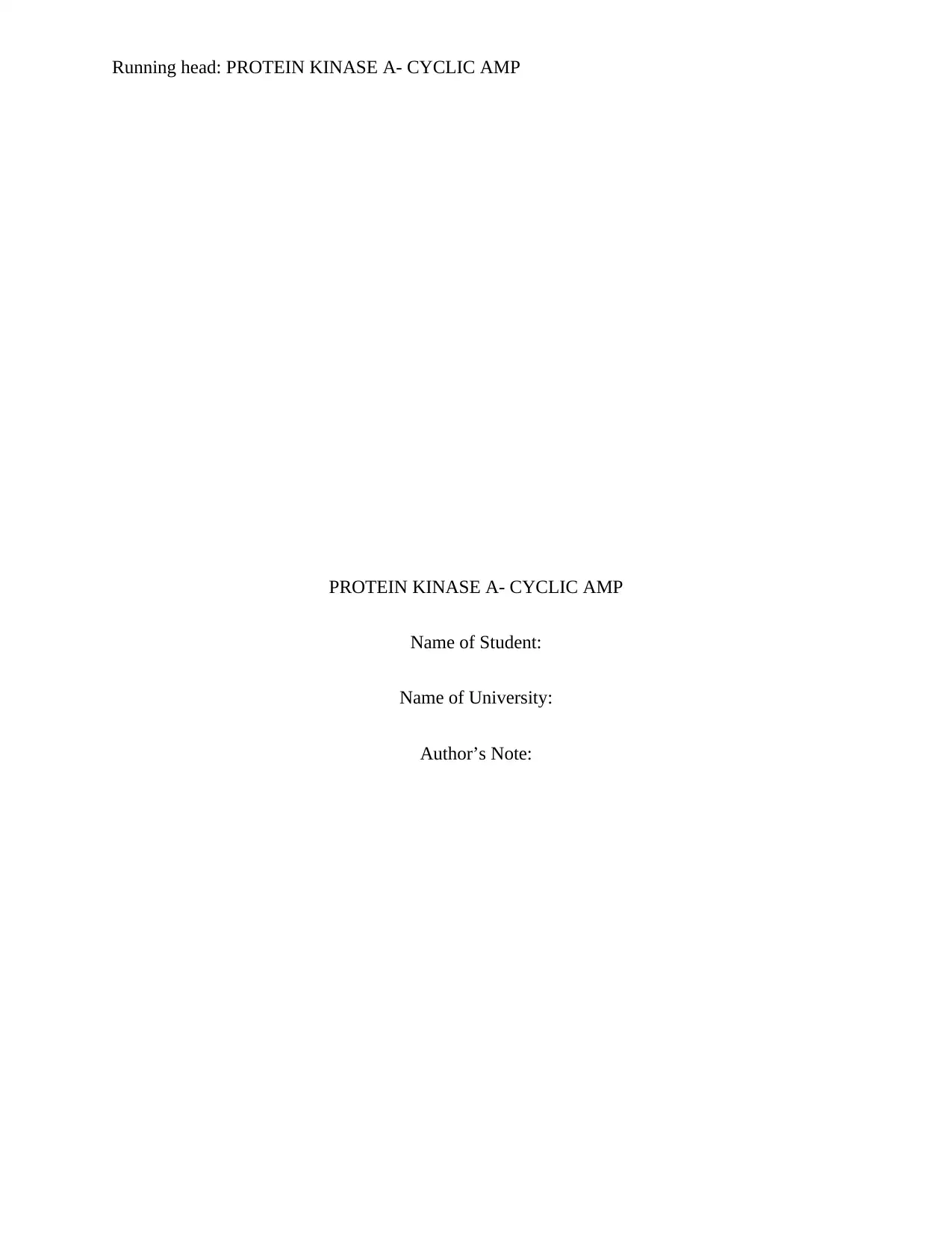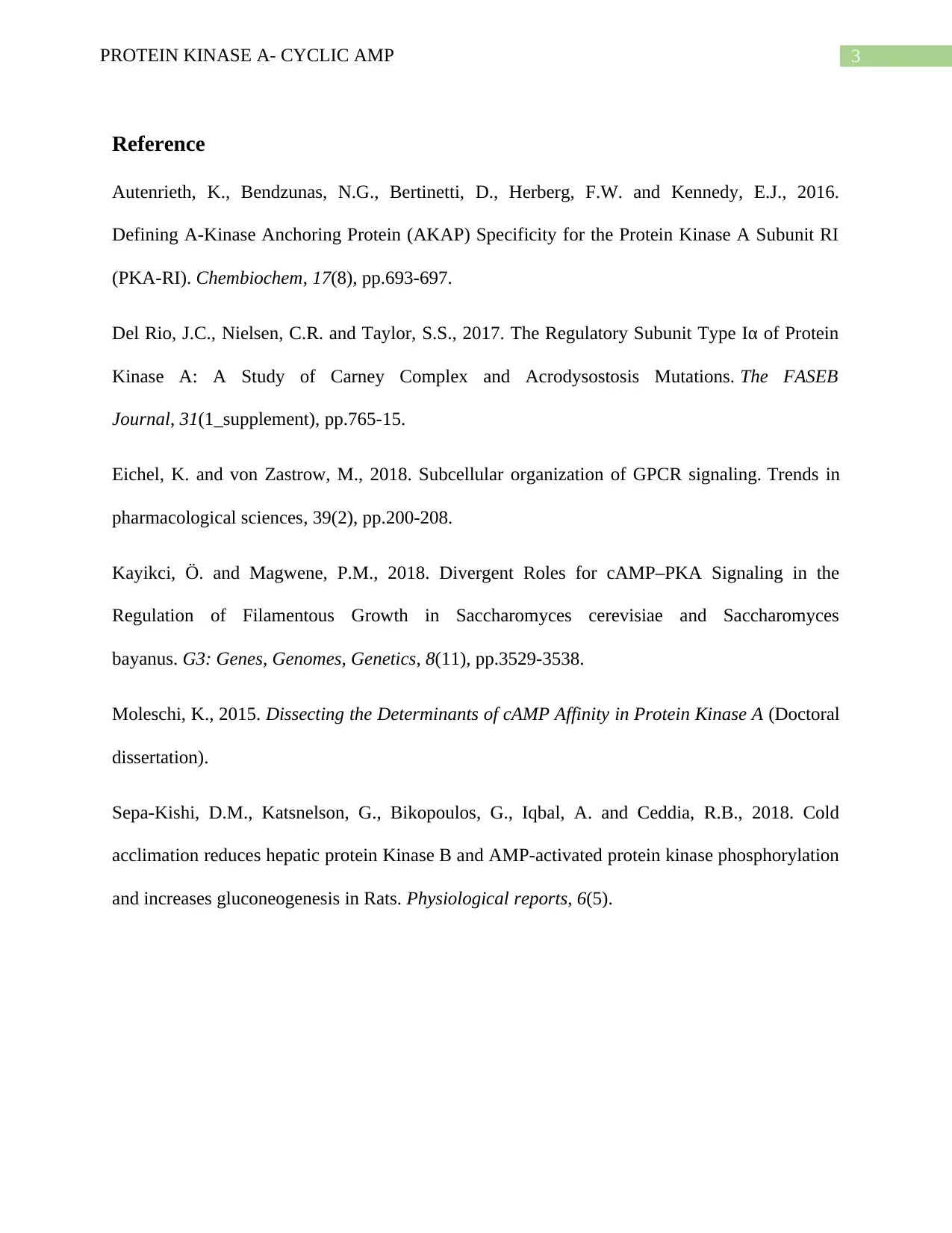Protein Kinase A-Cyclic AMP Signaling Pathway: An In-depth Report
VerifiedAdded on 2022/11/11
|4
|858
|155
Report
AI Summary
This report provides a comprehensive analysis of the Protein Kinase A (PKA) and Cyclic AMP (cAMP) interaction, a crucial signaling pathway in cellular processes. PKA, a holoenzyme complex with catalytic and regulatory subunits, is activated by cAMP, a second messenger generated by GPCR activation. The report details the mechanism of PKA activation, including cAMP binding to the regulatory subunit, conformational changes, and subsequent dissociation of the catalytic subunit, leading to the phosphorylation of various metabolic enzymes. The report also discusses the impact of this interaction on glycogen synthesis, lipid biosynthesis, and other signaling pathways, such as the inactivation of phospholipase C and activation of MAP kinases. The report highlights how manipulation of the PKA-cAMP interaction can affect cellular functions, such as filamentous growth in S. cerevisiae, underscoring its importance in regulating body metabolism and energy production. References to relevant research papers are also included.
1 out of 4











![[object Object]](/_next/static/media/star-bottom.7253800d.svg)